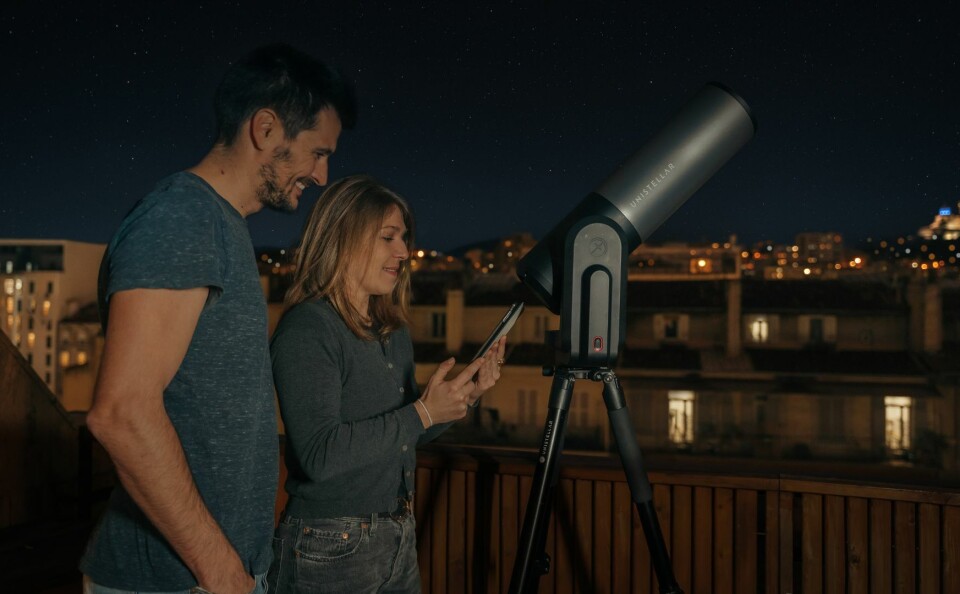-
Warnings issued over connecting to public WiFi networks in France
Lack of encryption and risk of connecting to ‘fake networks’ leave users at risk of hacking attempts
-
Cybercrime rises in France: see some free resources to fight it
Attacks are becoming more numerous, targeted and difficult to detect
-
Musk calls for EU to be abolished after €120 million fine for X
The South African billionaire’s social media platform was found to have breached EU rules
French digital telescopes give stargazers Nasa-quality view of space
Images captured by amateur astronomers using the French designed telescopes are feeding into scientific research

French digital telescopes are shaking up astronomy by giving amateur stargazers access to equipment previously limited to universities and large scientific institutions.
Made by Marseille firm Unistellar, they have even been credited with a scientific discovery by the journal Nature.
Users involved in Nasa research
Unistellar co-founder Laurent Marfisi told The Connexion: “Because our telescopes are digital, the information can be shared over the internet, which means data from many different locations can be collated to discover things that might otherwise not be seen.
“For example, when Nasa recently crashed a spacecraft into an asteroid to see if its trajectory could be moved, there were at least five main scientific inquiries.
“One had a university researcher coordinating a team of 31 of our users. They were not only the first to publish pictures of the collision, but by keeping their telescopes trained on the site for a month, they also gathered valuable data about the dust cloud thrown up, how it dispersed, and the colour of the dust.”
Read more: Amateur photographer’s shot of Dordogne skies sparks NASA interest
Magnifies night sky 100 times more than traditional models
The company launched in 2015 with the idea of using digital technology to make a reasonably priced telescope capable of magnifying the night sky a hundred times more than traditional models.
Thanks to partnerships with renowned scientific organisations, the firm also lets users become ‘citizen scientists’ and contribute to cutting-edge research.
“Suddenly it is possible to see stars in deep space and things such as nebulous clouds, which previously had only been seen in pictures from professional telescopes in universities and places like Nasa,” said Mr Marfisi.
“The electronic capturers in the telescope are much more sensitive than the human eye. They can also receive light for longer than the human eye – for a couple of seconds – whereas the human eye registers light for just a millisecond.”
Read more: Photographer captures rare ‘floating’ Moon in south-east France
Software identifies stars and planets
The cheaper model, called eQuinox2, costs €2,499 and does not have an eyepiece.
Images are displayed either on a TV with an Apple TV link, or on a mobile phone, tablet or laptop screen.
A similar model, this time with an eyepiece developed with Japanese camera-maker Nikon, costs €4,499.
“Most professional astronomers have been used to working with screen images for a while now,” said Mr Marfisi.
“But with an eyepiece you see and feel the infinity of space instead of a flat, two-dimensional image, which is why we developed the eyepiece model.”
Both models are linked to software that identifies objects in the viewfinder, allowing users to get optimum pictures of named stars or planets.
Opportunity to join astronomy projects
The telescopes can be used in cities and other places where light pollution normally makes using one difficult.
Unistellar also sells a filter enabling users to look at the sun safely during the day.
“It is our nearest star but we are still learning about it because it is so difficult to view,” said Mr Marfisi.
The telescopes, and software to run them, are designed in Marseille but made in China.
Mr Marfisi said most buyers are moving on from cheaper optical telescopes, costing around €100, after realising the limitations of their equipment.
However, around 30% are novices buying their first telescope, who are attracted by the quality and the digital guides and sky maps that come with it.
As well as the asteroid community telescope project, Unistellar users can join a range of other collaborative astronomy projects.
Night sky smartphone images from another French firm
Another French company, Vaonis, is making a name for itself with smartphone and tablet-driven products described as a cross between a camera and traditional telescope.
The firm, based near Montpellier, is due to launch a low-cost model called Hestia in June, which can be pre-ordered for €177 from its website.
It claims this new model will provide images of the sky on your smartphone with five times the resolution and 25 times the magnification of most smartphone cameras.
Its other telescopes start at €1,500.
Related articles
Photographer captures rare red sprite lightning near Dordogne chateau
Inside France’s ‘UFO Bureau’ - ‘we explain what people have seen’
























